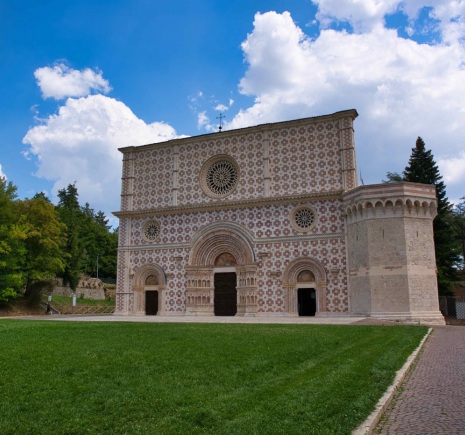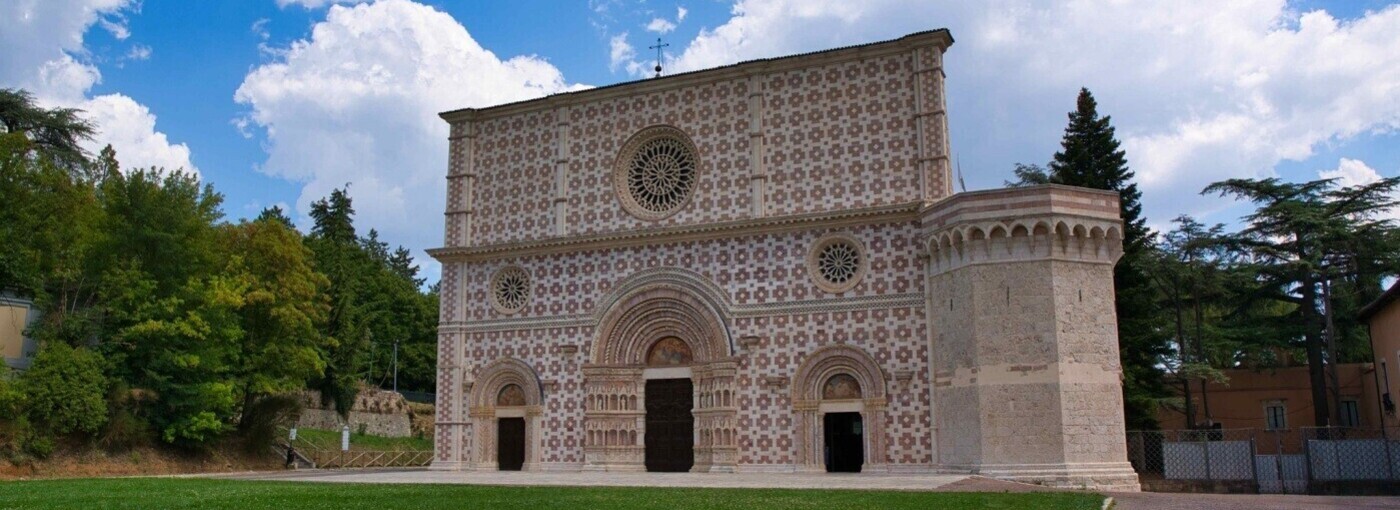The Jubilee and the Saints
by Father Giorgio Picu - published on 06/10/2024
To better understand the history of the Jubilees we cannot ignore two great intermediaries, two great saints who, perhaps independently, anticipated the practice of the Jubilees and, above all, laid the foundations for their practice: Saint Francis of Assisi and Saint Peter Celestine V.
The Pardon of Assisi: a gift asked to the Lord for every man.
"I pray that all those who, repented and confessed, will come to visit this church, may obtain ample and generous forgiveness, with a complete remission of all sins". It was an almost daring request made by Saint Francis directly to the Lord who had appeared to him on a night of 1216 while he was immersed in prayer in the Portiuncula. He found himself, the sources say, suddenly surrounded by a beam of light. The Lord granted it to him and Francis, immediately went to Pope Honorius III to obtain the indulgence and on 2 August 1216, before a large crowd, in the presence of the bishops of Umbria promulgated the Great Forgiveness.
Francis, on that day of August, to the people sheltered in the shade of oaks said: "Brothers, I want to send you all to Heaven and I announce a grace I obtained from the mouth of the Supreme Pontiff".
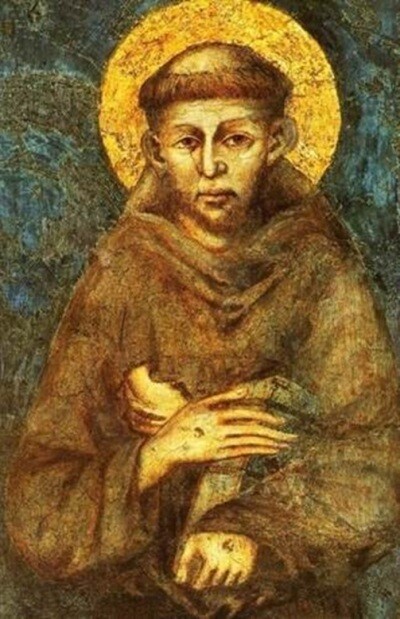
Saint Francis of Assisi
Thus was born "The indulgence of Forgiveness" that can be asked for themselves or for their deceased: to obtain it is necessary confession, participation in the Mass and the Eucharist, renewal during the visit of their profession of faith reciting the Creed and the Our Father, finally the prayer according to the intentions of the Pope and for the Pontiff. From 12:00 on August 1, until 24:00 on August 2, the plenary indulgence granted to the Porziuncola daily extends to all the parish churches around the world and also to all the Franciscan churches.
Celestine’s dream and forgiveness for all.
The Basilica of Collemaggio was "commissioned" by the Virgin Mary, who appeared in a dream to the monk Pietro da Morrone, who later became Pope Celestine V, and it became a symbol of L'Aquila dedicated to the Assumption. The church, which has been rebuilt several times due to the earthquakes that have marked the city's history, houses unique testimonies of art, history, and faith. Collemaggio was born from a dream, a symbol of the city of L'Aquila. At the end of the 13th century, the Virgin Mary appeared to the hermit Pietro Angelerio da Morrone during his sleep and asked to build a basilica to be dedicated to her just outside the city walls. Il monaco provvede quindi all'edificazione del primo nucleo di quella che oggi è riconosciuta come la massima espressione dell’architettura gotico romanica abruzzese.
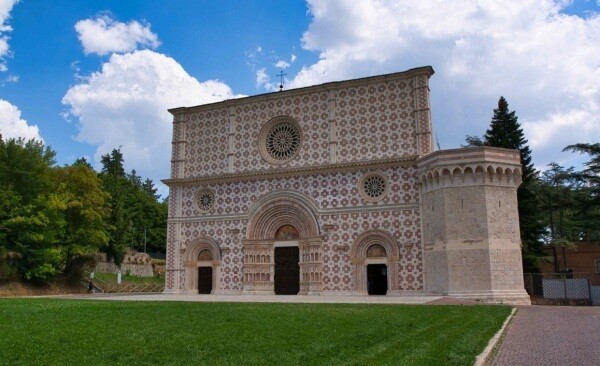
Basilica of Collemaggio, L'Aquila
The ladder of the angels and the request of the Virgin: "Once Blessed Peter (...) slept outside the walls of the city of L'Aquila at the place called Collemaggio. And he saw a ladder erected from the altar in the said place of Collemaggio unto heaven, and on it the angels going up and down; and on the top the blessed Virgin Mary among the angels, who told him to build in that place a church in honor of the same Blessed Virgin, which he did. In fact, the next day he went on his way to his friars in the Holy Spirit of Maiella, from there he sent two of these friars to L'Aquila, to buy that area of Collemaggio, which they did. And after a while it was built there, in the place where the staircase had been seen, the church with the chapel in honor of the same Blessed Virgin, which until today the people have in great devotion and reverence. Then gradually the monastery and buildings were built; and especially after the translation of his body the church was enlarged and made large, as it is now". The Basilica was consecrated on 15 August 1288 under the name of Santa Maria Assunta di Collemaggio, during a solemn concelebration presided over by eight bishops.
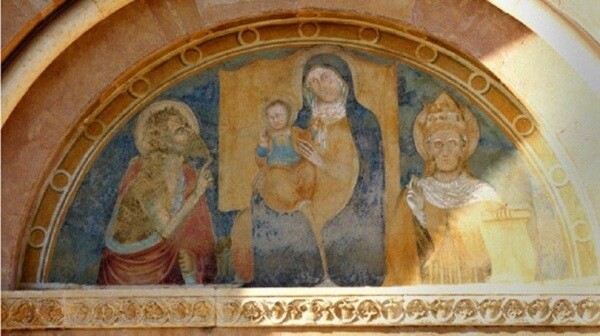
The fresco lunette above the Holy Door of the Basilica of Collemaggio
Some years later, on August 29, 1294, the hermit known as Pietro da Morrone, was crowned Pope with the name of Celestine V, in the presence of two hundred thousand faithful, including perhaps Dante Alighieri and Guido da Montefeltro. The Basilica was still under construction, it could not be the great building we see today, and the ceremony took place outside. In his short and painful pontificate, which lasted only a few months and culminated in his resignation during the consistory of 13 December 1294, Celestine instituted what many consider to be the first jubilee in history, known as Celestinian Pardon, which is celebrated every year between August 28 and 29.
It can therefore be said that in L'Aquila there is the oldest Holy Door in history, also preceding the Vatican one: it is surmounted by a lunette painted in fresco with the figures of the Madonna and Child between Saints Celestine and John the Baptist. In fact, the Basilica of Collemaggio kept a venerated relic of him.
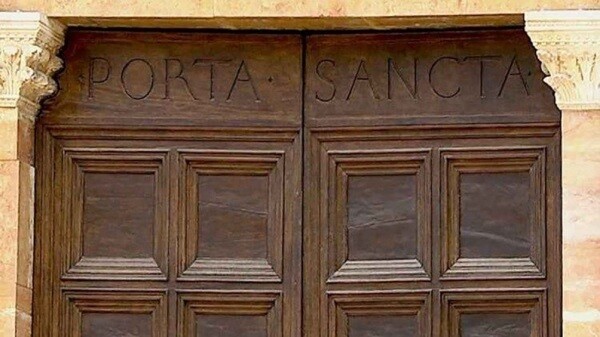
The Holy Door of Collemaggio
The Celestinian Forgiveness can be considered the prodromica feast of the Jubilee. Pope Celestine wishes that whoever, repented and confessed, goes to the Basilica on the day of the martyrdom of the Baptist, of whom the basilica once kept a relic, may profit from the indulgence: without paying anything, extraordinary fact at a time when indulgences had a cost. For L'Aquila the annual indulgence was included among the most important pilgrimage destinations, becoming a sort of "second Jerusalem".
These two spiritual experiences, these missionary initiatives, dispensers of the Mercy of God, are the basis of what, shortly after, would become the practice of Jubilees. These two initiatives were so well received by the faithful of the time that they have almost "conditioned" the Pontiff to extend the two initiatives to the whole Catholic Church; they will become and example pastoral prototype for the following centuries.
Jubilee 2025
For all those who want to live fully the experience of the Jubilee 2025 "Pilgrims of Hope", Omnia Vatican&Rome, division of Opera Romana Pellegrinaggi - Vicariate of Rome, makes available its experience to offer the pilgrim the right combination that can guide him to discover the cultural heritage of the city of Rome without losing sight of the goal of living their own experience of faith.
Through tailor-made itineraries and experiences, proposals for stays designed for both groups and individuals will be possible to live together the Jubilee of Rome 2025.
